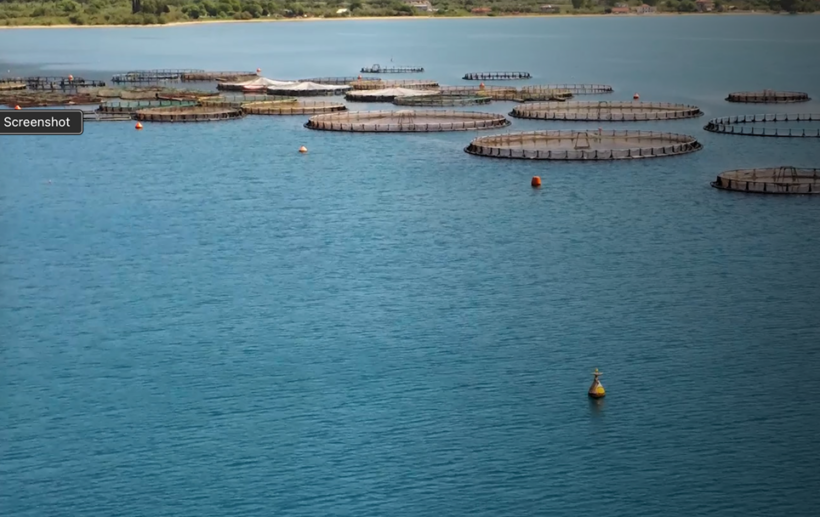Many of us have seen and appreciated the documentary “Anthropocene. The Human Era” (Canada 2018) where the disastrous human activities on planet Earth are told in visually striking images.
Perhaps we have seen the documentary “Deforestazione” Italy 2019, where the documentary director Francesco De Augustinis, from a different perspective, recounts «the strong dependence of many Made in Italy high quality [articles] on commodity-linked to tropical deforestation. A story that questions the concept of “high quality”, investigating dark corners of a globalized production system.”
From this first documentary, passing through “One earth: everything is connected” Italy 2021, De Augustinis always engages in a new denunciation on how the chain of poorly managed environmental processes (intensive farming, tropical deforestation, epidemics, climate change) are at the basis of the loss of the ecosystem on our only “mother earth”. In his presentation note, the director points out that: “Today more than ever we are aware (editor’s note:] but are we really sure?) of living on a small planet, where what happens in a forest on the other side of the world sooner or later will also have repercussions on our daily lives. One Earth is a story of these connections and at the same time a denunciation of different forms of exploitation and violence, underlying the unsustainable way of our species of inhabiting our one Earth”.
In recent days, De Augustinis presented his further,energetic, complaint on the topic of salmon raised in cages off the coasts of Northern European countries (Iceland, Scotland, Norway) [in] “Until the End of the World” (Italy 2023).
The Italian translation leads us to reflect: “Fino alla fine del mondo” si potrà sostenere “l’invasione degli ultracorpi-umani?”, “Until the end of the world” will it be possible to support “the invasion of the ultra-corps human?”
“Until the End of the World” [is] an important project from a photographic point of view, and is oriented to raise awareness of, and put under accusation, the problem of salmon farming, where millions of them die in cages before being caught with the consequence of a loss of balance even in the marine ecosystem. [It shows] a series of scandals that are shaking many producers in the salmon and fish industry. From the film, we learn that salmon, like sea bass, sea bream, trout, prawns, tuna, and octopus, are carnivorous fish. According to a study published in January by the English NGO Feedback, in 2020 almost 2 million tonnes of wild fish were used as feed to produce 1.5 million tonnes of salmon.
As the professor emeritus at the Faculty of Veterinary Medicine at the Norwegian University of Life Sciences, Trygve Poppe, reveals in the interview given for this documentary: “We have had this problem since the birth of fish farming […] When the fish are concentrated in cages, placing in each as many as 200 thousand individuals, if you think that in Norway there are thousands of cages along the coast, the number of fish is millions of times higher than it used to be (editor’s note: farms started before the 80s of the last century) […] [In addition,] most of the production takes place in open cages, with water circulating freely, so the lice in their larval state are transported between cages and between different farms.”
Sea lice (epeophtheirus salmonis) are parasites that attack the animal, creating painful lacerations that can be fatal for them, but even worse, it has been revealed that sick or deceased fish, in some cases, are destined for human consumption. The problem [of sea lice] is also responsible for mortality in wild salmon.
On a site we can read that:
It is estimated that from the dawn of time to today, a total of 113 billion human beings have lived on Earth (source :Population Reference Bureau).
According to another estimate, every single year over 160 billion farmed animals are destined for slaughter or killing for food purposes (source: based on FAO data).
In particular, the following are killed/used every year:
- 73 billion 174 million broilers
- 7 billion 702 million laying hens
- 1 billion 484 million pigs
- 921 million rabbits
- 809 million dairy animals (265 million cattle)
- 479 million goats for meat
- 302 million beef cattle
(FAO 2018 data)
80 million tons from aquaculture (approximately 80 billion individuals), of which approximately half in land-based farming
at least 93 million 633 thousand tons of fish caught
Let’s watch these documentaries carefully and then decide whether to support these projects where many unknown truths are revealed to us.






